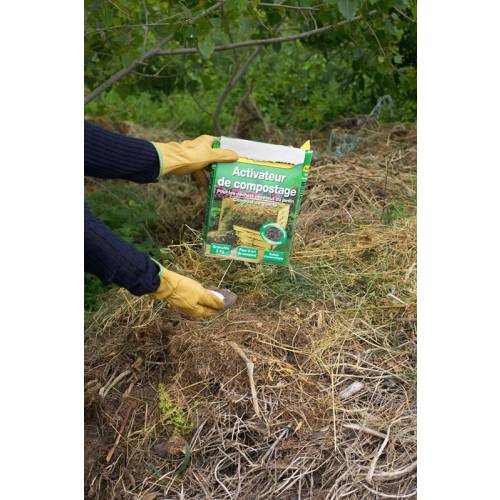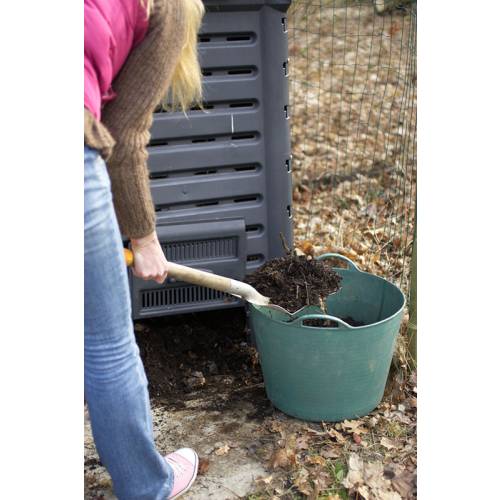
Nourish your plants
Make your own compost
- Details
-
It is like gold dust for the gardener! Compost feeds all plants without the risk of overdosing and costs nothing to make. So how can you miss the opportunity ?
Making compost is very easy. All you need to do is leave a mound of vegetable matter to rot down. If they are shredded or cut into small pieces along with being regularly turned with a fork then the results will be even better.
A wooden or plastic composter is more practical to use than just a pile on the ground. Protect the compost from extreme weather such as the cold in winter and the heat in summer and it will help the compost develop on a more regular basis.
On the other hand, it is harder to fork and turn over the pile. It is best to install the composter in the shade away from the trees. Trees' roots have a habit of helping themselves to it and remove a lot of the nutrients.
Feed it with peelings
Feed your composter as and when waste matter is available. Vegetable peelings, withered flowers, dead leaves and clippings are perfect for this and do not carry any disease. Contrary to what people say a compost heap does not heat up that much and diseases can be spread through it. Likewise, do not put plants that are in seed onto the compost heap as you run the risk of being invaded by this plant when you use the compost.
You can begin composting at any time. Autumn and the spring are the most favourable periods. It should be ready about a year and a half latter on average. The compost should be black with a crumbly texture. You should not be able to see with the naked eye any bits of the matter that you used to make it. If you can then it needs to be left for longer. You can produce the same result a little quicker (about a year) by systematically shredding everything that goes in it and turning it every month. You could also add some compost accelerator (ammonium sulphate, non toxic) if you have added a lot of stems to the composter.
Good for everything
Use the compost to enrich the soil when planting trees, shrubs, perennial or seasonal plants... Give your borders a helping hand by putting a few handfuls of this fertilizer around each plant. Use it to lighten heavy sticky soils by incorporating a bucketful to each square meter every two years. Feed your fruit trees with a couple of shovelfuls around their base at the end of winter: compost can be used everywhere in the garden !
Useful facts
Homemade compost and shop compost are not the same. The compost you make yourself acts as a fertilizer and enriches the soil it is mixed with. Commercial compost is just a growing medium, which is used to replace soil in pots. Made up of enriched fibers it cannot replace true homemade compost for example when planting a tree. - Photos (3)



